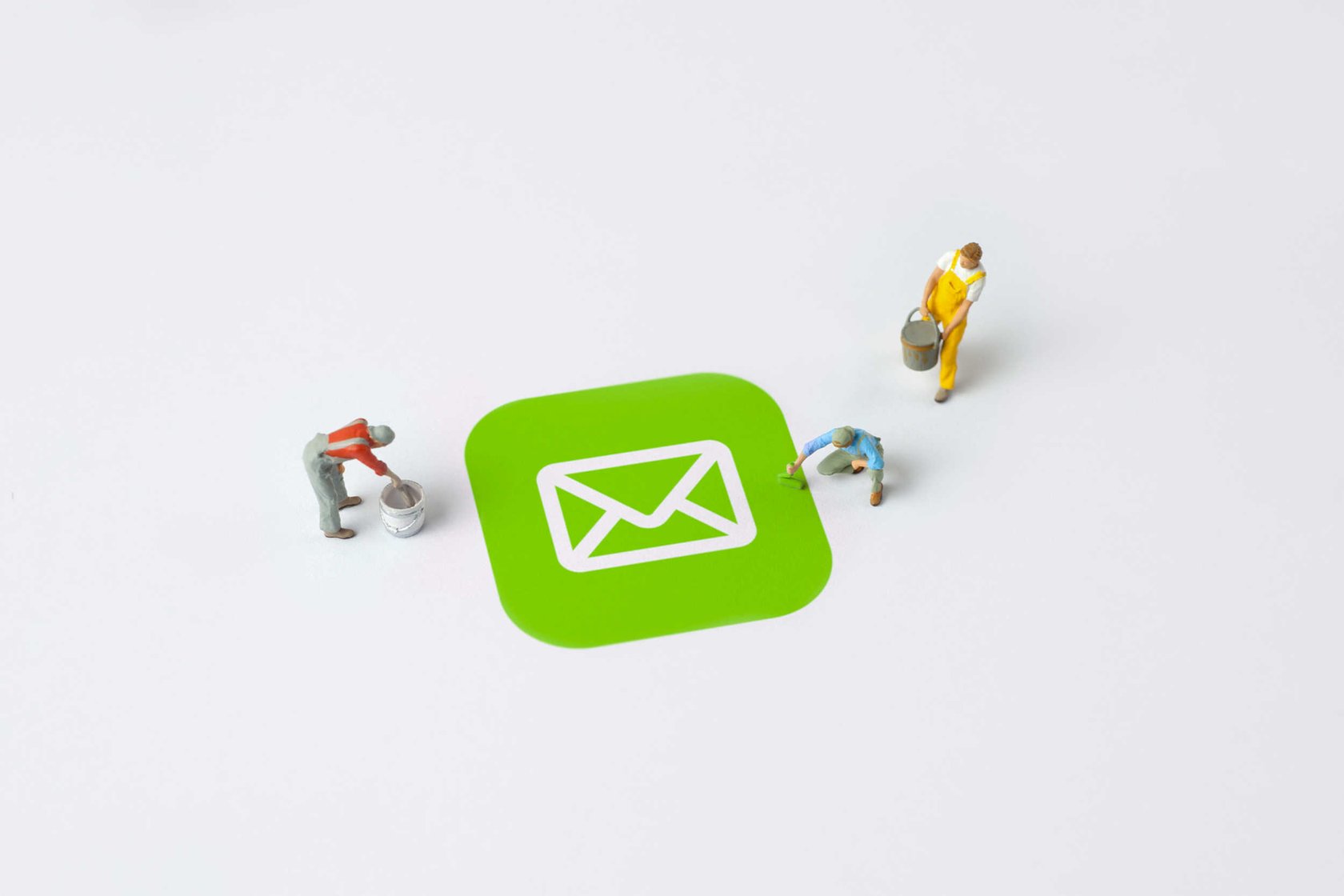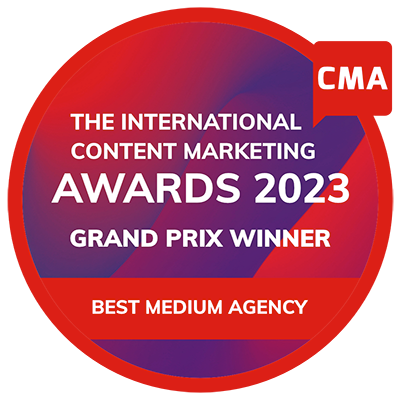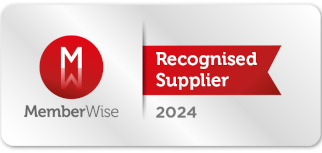
The ultimate guide to email design
Jessica Bennett,
-
DOWNLOAD
Your Content Marketing Checklist >

-
REQUEST TODAY
A Content Consultation >

The average person receives more than 100 emails every day, according to The Small Business Blog, so email design is one of the necessities in order to cut through the noise. While multiple forms of digital communication are available to us, email remains popular and, crucially, trusted both by brands and consumers alike.
Why email marketing design is important
All aspects of email marketing from its construction and content to its design require a high level of detail to deliver on its promise.
Tim Bond, Head of Insight at the Data & Marketing Association, says:
“The importance of email to a business cannot be understated. It remains the primary channel that both marketers and consumers prefer across all stages of the customer lifecycle. It’s able to assist brands to enhance customer experience across each stage of this journey like no other channel. Brands are using email as the primary way to provide customers with advice, reassurance and updates.”
The number of emails sent per day is only set to increase, making it more difficult to get noticed. Statista estimated that by 2025, 376.4 billion emails will be sent and received per day (up from 306.4 billion in 2020).
Just because your brand is sending emails to customers and prospects doesn’t mean your message is reaching them. According to Adobe, almost 40% of emails are viewed for eight seconds or fewer. Recipients often scan emails and disregard those that don’t offer obvious value or appear too dense. Many of those 300+ billion emails will remain unread or unopened.
“A well-designed, attractive email is essential to drive engagement and conversions,” explains Send In Blue. “From the moment an email appears in your reader’s inbox, you want them to feel compelled to click through, even after just a glance. Beautifully designed and informative emails result in greater ROI and fewer unsubscribers.”
It’s more important than ever that you find the best email design to support your brand to make sure you stand out from the crowd and get your message heard.
Here’s how...
How to get your email content right
To begin your email design, first you need to write your content.
Check out more email marketing strategy tips, but in general you should:
• Identify your target audience and consider their preferences and habits. Where are they in the attract, engage and delight sales journey?
• Determine the purpose of your email. Is it to inform, nurture, or build a relationship? This will depend on where they are in the sales journey.
• Choose an appropriate subject line. It needs to be clear, concise, and attention-grabbing. You should avoid using words such as ‘free’ and ‘winner’, and writing in capitals, because these often trigger spam bots.
• Personalise the email. Addressing the recipient by name and making the email relevant to their interests or needs will boost engagement.
• Write a compelling opening. An interesting introduction will help ‘hook’ the reader.
• Create a clear call to action. What do you want the recipient to do after reading this email?
• If you are emailing about a promotion, include the closing date prominently. This creates a sense of urgency.
Smart Insights found that customers want discounts, receipts, and advanced notice of products and sales from marketing emails. However, businesses prioritise advice, information and tutorials in their top three. Although your email metrics will tell you if your content is useful to your audience, make sure you get off on the right foot by giving your audience what they want.
Don’t forget the all-important technical checks, too. Give your copy a thorough proofread before designing and sending the email, checking for spelling and grammatical errors.
These checks extend to privacy. Vicki Sherman, Dialogue’s Digital Production Lead, explains:
“Marketers should only be communicating with an audience who have opted in to receive their content. Doing otherwise could land you with a fine for breaching General Data Protection Regulations (GDPR), but it will also mean your email is going to an individual who doesn’t want to receive it. If you’re using email to try to build engagement with a customer, sending them something they’ve not asked for will do the opposite.”
By following these steps, you can create effective and engaging email copy that gets results.
How to design your email
Let’s start with the basics – types of email design.
These are:
• Plain text email design – simple text without any enhancements. No additional fonts, designs, colours graphics or embedded multimedia. Even links aren't embedded in plain text email.
• HTML email design – Basic HTML emails use basic text formatting, using HTML to add simple elements, such as headlines and clickable links. Rich HTML emails include images, clickable links, buttons, graphics and other visually appealing design elements.
• Interactive email design – these include functional elements in the email body that allow recipients to engage with the content, such as ratings, surveys and quizzes.
Here are some basic rules to follow to get the best email design for you.
1. Follow visual hierarchy
Your email layout should encourage people to keep reading by using visual hierarchy, which positions content so it can be scanned and understood easily, while also providing downward momentum.
A zigzag shape works well, as Send In Blue explains:
“This strategy plays on patterns of eye movement. Reading left to right, we have a tendency to jump ahead when engaging with content… we can capitalize on this tendency by dispersing particularly eye-catching content throughout the copy.”
An inverted triangle also works well for emails with one key message or notification, whereas a straightforward column is best for an information-full newsletter.
2. Structure your email
Design your email with the user experience in mind. Make it scannable and easy to navigate. Text should be broken down into small, digestible chunks, with headers and bullet points to emphasise your content.
“Many email campaigns use a multi-column layout. Separating content into two to three columns arranges it in a logical, grid-like structure,” explains Adobe. “There are also hybrid layouts that more resemble a blog post or other piece of content, with a featured story on top, leading into a multi-column layout at the bottom. This allows you to create a content hierarchy with opportunities for clever calls to action to boost customer engagement.”
We also recommend adding engaging images, videos, GIFs, animations, etc. to break up the written content and create a memorable experience, which leads us on to…
3. Add interactive elements
Including interactive elements within your email reduces the barriers to engagement as readers can actively encounter your content without having to follow links or leave the email. Interactive elements are fun and make your email stand out.
Examples of interactive email elements include:
• Animated buttons and calls to action
• Product carousels
• Offer reveals
• Polls and surveys
However, keep in mind that not all email browsers support this functionality. Make sure most of your audience can view these additional elements before you invest the time in creating them.
4. Make use of white space
Having said all of the above, don’t forget to leave some ‘breathing room’ in your email. Keep paragraphs short and use bullet points to get your message across clearly and concisely.
“Separating sections with white space allows the reader to understand where one element ends and the next begins. This helps to communicate information in a clear, organised, and attractive way,” recommends Send In Blue. It also helps emphasise the most important elements of your email.
This doesn’t mean you can’t use colour, but make sure there is a simple background colour that functions as ‘white space’. Then, use complementary colours to section your email by, for example, using a different colour for your header and footer.
“Keep your palette to two or three colours to avoid visual headaches,” says 99 designs.
5. Don’t forget your brand
Emails are a fantastic way to build brand recognition, so make sure you weave your brand’s visual identity into your email design. Include your brand’s logo, colour palette and fonts in your emails. This provides consistency for recipients when they click through to your landing pages, which also feature all these brand elements.
However, it’s best to use one brand font for your headlines and another for your body copy – a basic font such as Arial or Times New Roman. This keeps the email clear and prevents visual overload from too many competing fonts.
Make sure the font size is correct, too. Size 14 to 16 point will ensure your copy is readable.
6. Optimise your images
Make sure your images are web-optimised so they load as quickly as possible. Nothing deters customers and prospects more than slow load times!
Vicki says: “Your image file sizes should always be as small as possible, while still being suitable for retina displays. In short, if you have an image in your email that’s larger than 1MB, it’s definitely too big!”
“Also, include descriptive 'alt' text for images and to meet accessibility guidelines, your recipient might be using a program due to being visually impaired, or it could be that an image is just slow to load because of performance issues on their mobile data network.”
If you are relying on stock or generic images, then ensure they fit with your brand and your colour scheme.
7. Pay attention to your calls to action
Your calls to action (CTAs) should be strategically placed throughout the email layout to boost click-through rates. The visual hierarchy mentioned above should direct readers towards your CTAs.
Your CTAs should also stand out from the rest of the email and entice readers to click, clearly demonstrating why they are a valuable next step.
Vicki advises: “Buttons will normally convert better than text links.”
99 designs suggests: “Make strategic use of the rainbow and leverage colour psychology. This is especially important with your call to action. Use action-oriented colours like red or orange to drive conversions.”
We also suggest including links to visit your website and to follow your social media accounts to increase brand awareness and boost conversions.
8. Use responsive email design
Studies vary but most find that the majority of email opens now happen via a mobile device. This means it is important that your email design is responsive, so that it changes format to fit the screen size. You can’t get your brand message across if it can’t be read properly! By using a responsive design, you enhance the user experience and improve engagement.
9. A/B test
Your email design journey isn't complete until you're done some level of testing.
As Hubspot explain: “Similar to most marketing efforts, email design is an iterative process. You might determine you need to make changes and updates to get the most out of your email design. Whether it’s modifying your CTA, colours, images, layout, or tone, don’t be afraid to A/B test designs to determine which one works best.”
Once you have an email design or designs that work, create a template to save time in future.
Running experiments with split testing, testing subject lines and preheader text is a continuous part of the process. If your CRM and/or email distribution platform has the ability to A/B test a small percentage of the total audience, for example, picking the subject line that has the best open rate, before deploying to the remainder of the audience...then even better!
Take advantage of our FREE content consultation here to talk to us about membership magazines.
Email marketing design trends
Some emerging email marketing tactics are set to get even more popular in 2023, including:
Modular email templates - These templates allow marketers to create editable blocks in their emails making it easy to reuse and update templates, and to send multiple campaigns. It also ensures a consistent look and feel across all your email comms.
“These are a great option as an alternative to html,” says Vicki. “Many email service providers build these blocks so they’re already responsive, so your emails will be suitable across mobile and desktop devices.”
Accessibility and inclusivity - From choosing stock photos to designing images from scratch, to writing and designing in a clear and accessible way, emails will reach a wider subscriber base by catering to everyone’s visual and cognitive needs, and avoiding stereotypes and generalisations.
Vicki says: “It’s the small details that really make the difference, which is why Dialogue has such a conscientious email design strategy.”
Videos in emails will become more popular
The popularity of video shows no sign of slowing down. Luckily, video is perfect for showcasing products and services.
“If you’re using video in email, make sure you adhere to best practice around the use of video embeds, constraints around the email client that recipients are using, video markup, as well as consideration around how your email platform supports this feature, but demand is continuously growing for video to be played from within the email,” cautions Vicki.
More long-form emails will be sent - People read long-form emails, provided the content is valuable. Marketers can make use of long-form emails for their newsletters and other comms.
“Email is the perfect place to build brand engagement and deep dive into the content your audience wants to hear about,” summarises Vicki.
Automated email campaigns - Automated campaigns take away some of the manual work involved in email campaigns and can help with personalisation and tailoring content on a larger scale, incorporating commercial and transactional communications.
“We’ve seen a rise in clients coming to us for help with their automation,” explains Vicki. “If you have specific objectives you would like to achieve, but aren’t sure how, it’s always worth a chat with your digital team or just submit an enquiry on our website. We have experience in different CRM/email platforms, including Salesforce Marketing Cloud.”
Resources
The Small Business Blog
Data & Marketing Association
Adobe
SendinBlue
Smart Insights
Hubspot
99 Designs
Read more insightful articles
See more from the blogContent marketing – are you taking a sustainable approach?
The changing face of the luxury consumer
Evaluating the success of your email strategy
How to create a digital magazine
Proud to be a winner of industry awards, recognised as content marketing experts in print and digital media.












